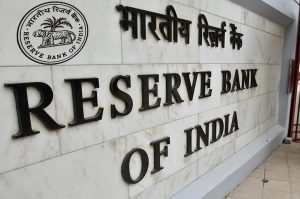The RBI’s latest monetary policy review has unreservedly arrived in disagreement to the milieu of incalculable hopes the government had pinned on the former in terms of accomplishing the much needed thrust to reinforce the economic growth which has now decelerated in the last five quarters.
The principal trepidation of the government qualifies to be the dreary 5.7 percent GDP number in the first quarter of the year in progress. When the entire world, both advanced and developing, is registering economic expansion, India materializes as a solitary struggler.
By maintaining the status quo and not interfering with the repurchase or repo rate (the rate at which the central bank infuses liquidity in the banking system), the RBI has hurled an unambiguous message to the government (against its highly propagated credence) that the economy needs a boost up when inflation is rising (retail inflation is up by 2 percentage points since the Monetary Policy Committee’s last meeting), or else the growth will nosedive more.
Key decisions of meet
The monetary policy committee of the RBI has slashed its GDP forecast, revising it down to 6.7 percent this year, as against the 7.3 percent projected earlier in August.
The GDP growth has been declining incessantly over the past five quarters and had already descended to 5.7 percent in the first quarter of this year.
On inflation, the committee felt that it has roughly moved on expected lines. It has projected that inflation will move within the 4.2 to 4.6 percent range over the next half-year.
The RBI’s hawkish tone and its assessment to keep the interest rates unchanged at the policy review even left local bond traders grappling with losses.
Predicament haunts RBI
Nevertheless, the RBI is also in a predicament, somewhat. If the central bank envisages that the enduring slowdown is due to the government’s economic policies alone, it is abhorrently mistaken. Although demonetization and the freshly pioneered goods and services tax (GST) are foremost grounds for the holdup, there are other explanations as well. Non-performing assets which have been plaguing the banking system and the over-leveraged corporate sector are the other key hurdles, which this government has minimally inherited. The slothful rate of private investment has been a matter of trepidation not only in this government but in the previous one as well.
On the contrary, the Modi government has compensated by pitching in with an increased public investment. It was what staunchly helped the economy to sail through contentedly in the better part of the year-but not anymore. India’s fiscal deficit touched 96.1 percent of the Budget estimate for FY18 at the end of August as the government kept its foot on the spending pedal to prop up the economy while revenues came in at their accustomed reticent pace in the opening months of the financial year.
Data released by the Controller General of Accounts (CGA) have shown that the April-August fiscal deficit is now considerably higher than the 76.4 percent for the year-earlier period.
So it is time for corporates to pitch in antagonistically, which does not seem a case anytime soon considering their highly-leveraged balance sheets and the next Lok Sabha elections knocking on the door.
Nonetheless, a sanguine scenario is that a festive spirit is most liable to lead a spike in consumption aided by the Pay Commission’s award, although GST will prolong acting as a dampener for a little more time.
In conclusion, it is up to the government to perk up its value of spending and circumvent fiscal disorderliness. As all wise men know, no one but the government is the preeminent judge of the economic health of the country.










